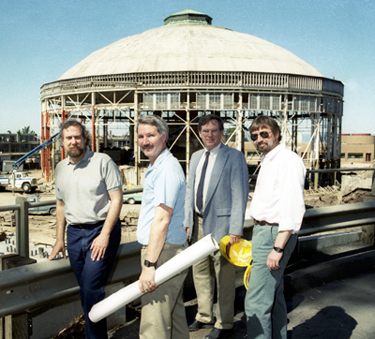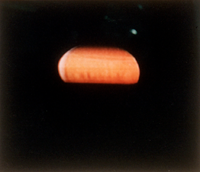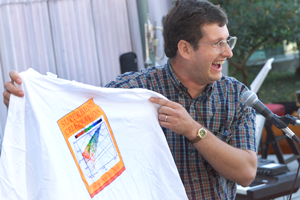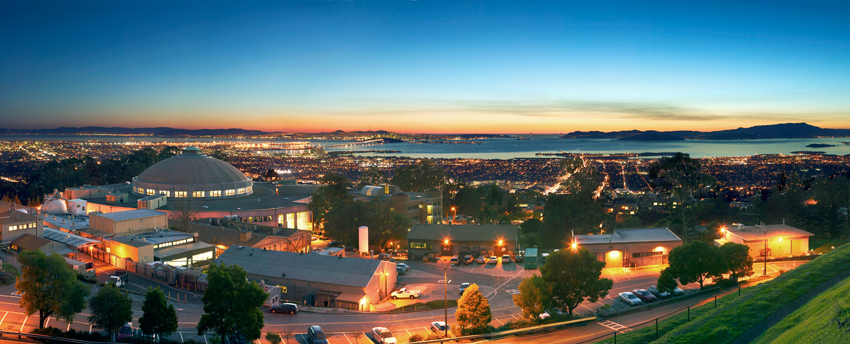A Brief History of the ALS

The Advanced Light Source (ALS) officially achieved first light on October 5, 1993. But the story really began a decade earlier, in the 1980s, during David Shirley’s tenure as Berkeley Lab director. A veteran synchrotron user, Shirley felt strongly that synchrotron radiation could play a large role in U.S. science and that the West Coast in particular needed a machine for lower-energy light (extreme ultraviolet to soft x-rays). To that end, in the early 80s, Shirley proposed construction of the ALS, the first big accelerator to be built at Berkeley Lab in nearly three decades. Despite a few false starts and setbacks, Congress eventually authorized funding for the project in 1987, and construction began in 1988.
The plans for the ALS incorporated a 1930s-era dome designed by Arthur Brown, Jr., the architect of Coit Tower in San Francisco. The landmark dome had previously been used to house E.O. Lawrence’s massive 184-inch cyclotron, an advanced version of the invention for which he received the 1939 Nobel Prize in Physics. The structure was situated atop a knobby promontory known as Charter Hill, midway up the ridge behind the UC Berkeley campus.

Construction of the ALS at the historic site was led by project director Jay Marx, a physicist who had directed the PEP-4 project, one of the largest particle physics experiments of its time. He and his group succeeded in completing the ALS ahead of schedule and under budget. In October 1992, as ALS construction was nearing completion, Marx handed the reins of directorship over to Brian Kincaid, who guided the ALS through its commissioning and early years as a productive scientific facility.
The first x-ray light from the ALS was produced at 12:20 a.m. on October 5, 1993. A phosphor-coated screen had been placed in the path of the beam to produce a visible manifestation of the arrival of the first x-rays at Beamline 10.3.1. The resulting photo evokes the image of a rising sun, an appropriate symbol of the dawning of a new era at the ALS. David Shirley had been succeeded by Charles Shank as Berkeley Lab director in 1989, but Shirley returned on October 22, 1993, to cut the ribbon at the ALS dedication ceremony (watch video).

After a few years of operation, the ALS experienced some growing pains. A disappointing DOE review in 1997 prompted Shank to elevate the ALS from a program to a full division, and Daniel Chemla was named ALS division director in 1998. Neville Smith, head of the ALS scientific program, conducted a workshop to develop the scientific way forward, leading to a revitalization and reorganization of ALS scientific and user programs. A subsequent DOE review in 2000 commended the changes, concluding that Berkeley Lab and ALS management had responded quickly and effectively to the earlier criticisms.

In the fall of 2001, the ALS underwent a major retrofit, replacing three of its conventional storage-ring bend magnets with superconducting magnets, or “superbends.” This retrofit, under the leadership of accelerator physicist David Robin, allowed the ALS to extend its spectral coverage to higher photon energies to meet the demand for protein crystallography beamlines without sacrificing performance at lower photon energies. Thanks to extensive modeling and planning beforehand, it took less than two weeks after installation began before the machine was ramped up to full strength.

During his six years as director, Daniel Chemla oversaw the build-out of beamlines on the experiment floor and a tripling of the number of users. His ambitious 20-year roadmap for the ALS laid the groundwork for new beamlines, accelerator upgrades, and expanded scientific programs. In 2004, Chemla stepped down from this position for health reasons. Veteran ALS user Janos Kirz, a pioneer of x-ray microscopy, took on the role of acting ALS director for two years, then passed the baton to Roger Falcone in 2006.
In February 2009, the ALS made the switch to a beam-injection technique developed at the Advanced Photon Source, called “top-off mode.” Previously, the storage ring was refilled with electron bunches three times a day to 400 mA; each time, the beam current decayed to about 200 mA within 8 hours. In top-off mode, the beam current is constantly topped off at 500 mA. The constant beam current enhances the flux and brightness of the light while simultaneously improving the thermal stability of the machine and its beamlines.

By 2013, the ALS had for 20 years successfully served users with diverse requirements. A limitation, however, was the inability to serve time-of-flight or pump-probe experiments (which require pulses of light) during normal (multibunch) operation. To address this, a new mode called “pseudo single bunch” (watch video) was developed, where a single electron bunch in the storage ring is repeatedly kicked in and out of the orbit of the main bunch train. This bunch generates spatially separated, adjustable-frequency pulses that can now be used for timing experiments throughout the year.
Most recently, advances in accelerator design have made it possible to construct diffraction-limited storage rings (DLSRs), where the electron beam size is comparable to the wavelength of the light emitted. According to preliminary studies, a DLSR upgrade of the ALS (ALS-U) modifying the ALS magnetic lattice and injection process would vastly improve brightness, coherence, and resolution. On November 14, 2022, the ALS upgrade received “Critical Decision 3” (CD-3) approval from the U.S. Department of Energy, which formally releases funds for purchasing, building, and installing the upgrades that will allow the 29-year-old facility to maintain world leadership in soft x-ray science for at least another 20 years.
More Info:
Articles
Shining the Light on a Decade of Great Science
Berkeley Lab History: 75 Years of World-Class Science—the 1980s
Bright Beams: The Advanced Light Source (PDF)
Photos
20th Anniversary Kickoff Brunch (January 11, 2013)
ALS 20th Anniversary Celebration (October 4, 2013)
Videos
ALS Dedication, October 22, 1993 (excerpts)
Pseudo Single Bunch
Swap-Out Injection for ALS-U
